What's New
Displaying results 4091 - 4100 of 4914

Resource | Publications,
This assessment of HIV prevalence among people injecting drugs in the four cities of Mandi Bahauddin, Rawalpindi, Gujranwala and Sheikhupura was conducted in July-August 2009. This assessment includes city wise mapping for size estimates of people injecting drugs, identification of sites where injecting is prevalent, estimates of HIV prevalence among people injecting drugs through provision of VCCT services (confirmation of reactive samples in the Public sector laboratories) and collection of relevant behavioral data.
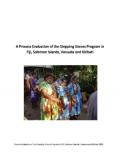
Resource | Publications,
The process evaluation of the Stepping Stones (SS) program in Fiji, Solomon Islands, Vanuatu and Kiribati was conducted throughout June 2009 to January 2010 period. The aims of the evaluation were to; 1) describe and share the lessons learnt on the different processes used to deliver the program in current countries, 2) make recommendations on the future sustainability and strategic direction of the program and 3) to make recommendations on the monitoring and evaluation (M&E) methodologies to ensure accurate and reliable collection of SS data for future outcome orientated evaluations.
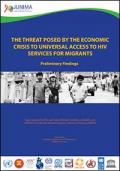
Resource | Publications,
The objective of this paper is to give an overview of the potential impact of the current crisis on migrant and mobile populations in Southeast Asia, and assess how the likely increase in unsafe mobility with its accompanying risks and vulnerabilities for HIV transmission will affect the health of people on the move. The economic crisis will have severe consequences for employment and poverty in the region as it often pushes out of the labor market the most vulnerable, such as migrants. Migrant workers vulnerabilities to HIV will likely be exacerbated with increasing deterioration of their economic opportunities.
Further, we know that even during the best economic times the combination of social, cultural, linguistic, legal and behavioral barriers affect migrants’ access to information and to prevention, health and social services. These conditions are likely to worsen during the economic downturn.
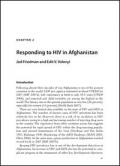
Resource | Publications,
There are very limited data available on the state of HIV and AIDS in Afghanistan. The number of known cases of HIV infections has been relatively low so far. However, there is a risk of an escalation in HIV prevalence owing to a high and increasing number of injecting drug users in the country. The experience from other countries across Asia suggests the potential for rapid spread of HIV within the drug-injecting population and onward transmission of the virus (Friedman and Des Jarlais 1991; Riehman 1998; Monitoring of the AIDS Pandemic (MAP) 2005; Ohiri 2006). At the same time, opium production in Afghanistan reached record levels in 2007 (IMF 2007b).
Keeping HIV prevalence low is one of the development objectives in Afghanistan. An increase in HIV and AIDS also has the potential to complicate progress in the attainment of other key development objectives.
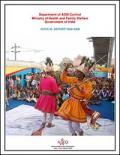
Resource | Publications,
India had an estimated 1.8 – 2.9 million HIV positive persons in 2007, with an estimated adult HIV prevalence of 0.34% (0.25%–0.43%). As the HIV Prevalence among the high risk groups (HRG) is very high compared to that among the general population, India continues to be in the category of concentrated epidemic. The sexual mode continues to be the major mode of transmission, though transmission through injecting drug use and Men having Sex with Men are on the rise in many new pockets. The annual HIV sentinel surveillance covered 1,215 sites in 2008-09.
The National AIDS Control Programme (NACP) Phase-III (2007-2012) has the overall goal of halting and reversing the epidemic in India over the five-year period. It places the highest priority on preventive efforts while, at the same time, seeking to integrate prevention with care, support and treatment.
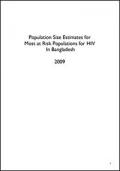
Resource | Publications,
This report provides the results of the 2009 in-country process of updating Population Size Estimates for MARPs. The exercise has been undertaken at this juncture, not only because the previous estimates are already five years old, but because of newly available data that allows the country to improve upon previous estimates. A large-scale mapping exercise, known as the Rapid Situation and Response Assessment (RSRA) provided a major impetus for updating the 2004 estimates for IDUs and FSWs in particular.
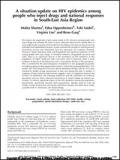
Resource | Publications,
We explore the magnitude of and current trends in HIV infection among people who inject drugs and estimate the reach of harm reduction interventions among them in seven high-burden countries of the South-East Asia Region. Our data are drawn from the published and unpublished literature, routine national HIV serological and behavioural surveillance surveys and information from key informants. A mapping of harm reduction interventions suggests a lack of congruence between the location of established and emerging epidemics and the availability of scaled-up prevention services. Harm reduction interventions in closed settings are almost nonexistent. To achieve significant impact on the HIV epidemics among this population, governments, specifically national AIDS programmes, urgently need to scale up needle–syringe programmes and opioid substitution therapy and make these widely available both in community and closed settings.

Resource | Presentations,
The drug of choice in Malaysia is opiate-based drugs (heroine and morphine) and marijuana. In the past decade, annually more than 35,000 drug addicts are identified in the country which has reduced significantly, and in 2008--to about 25, 000 cases. From 1988 – 2008, there are 285,762 addicts that are registered with National Anti-Drugs Information System (NADI). The advent of synthetic drugs (ATS) is a present challenge to Malaysia.
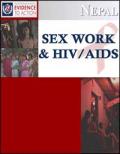
Resource | Reviews and Snapshots,
Nepal has a total population of 30,138,172 (mid 2009).1 Prostitution is illegal in the country, though, according to the government’s data, there are around 60,000 commercial sex workers in the country. It is estimated that 24,000 to 34,000 of these are female sex workers (FSWs), 20% are commercially sexually exploited children (around 10,000‐12,000) and the rest are male sex workers (MSWs) (around 12,000‐14,000).
The economic condition of Nepal drives many girls (some as young as nine years old) to be commercially sexually exploited. Poverty, in general, is the most commonly identified “push factor” instigating trafficking. In the direct sense, the lack of economic alternatives faced by women makes young girls particularly vulnerable to trafficking. Girls in Nepal are more susceptible to poverty and have limited access to education. The result is that women often lack economic alternatives and/or a proper understanding of the risks involved in trafficking.
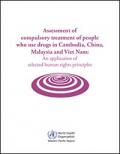
Resource | Publications,
This report has been prepared by the Western Pacific Regional Office of the WHO to describe the "compulsory treatment centres" in Cambodia, China, Malaysia and Viet Nam, and assess the treatment they provide. The main objective of this report is to use some key human rights principles as a lens through which to assess and document the situation in the compulsory drug treatment centres in a constructive way, as a basis for engaging in dialogue with policy-makers in these countries.
The assessment suggests that these centres lack effective drug treatment services. There is also a lack of prevention or care services for HIV in closed settings, where the spread of the disease is much faster than in the community. People who use drugs in the region are at risk in these settings because they do not receive drug treatment and HIV prevention services.





